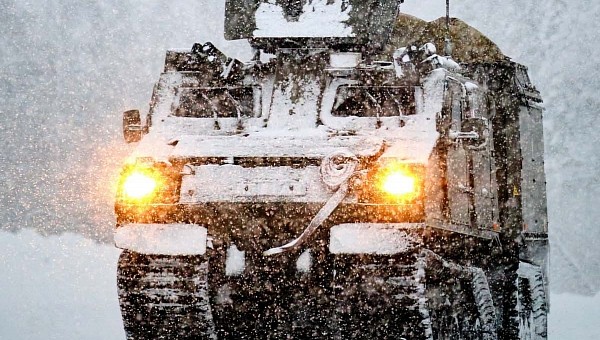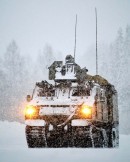There’s a new toy coming for the UK’s Royal Marines, although not this year – a new generation of all-terrain beasts will be replacing the current fleet and older similar vehicles. Feeling just at home in the Arctic as it would in the desert, this future monster on wheels boasts a certain capability that makes it extra potent.
The UK’s Commando Forces are getting ready to say goodbye to the Viking and the old Bv 206. New transportation vehicles are coming to town, known as Future All-Terrain Vehicles (FATVs).
They’re coming from the well-known BAE Systems, and they’ll be fitted with Cummins engines made in Darlington. As their name indicated, these rugged machines are meant to tackle the most difficult environments, while keeping the troops inside safe from potential threats, and delivering much needed cargo.
Each FATV will come with two cabins. The front one will have enough space to accommodate the driver plus three fully-equipped marines. The rear one is more versatile in terms of configuration. It can either carry up to eight marines, also fully equipped, or serve other purposes, including short-range air defense.
What supposedly makes the FATV stand out is the improved swimming capability, enabling it to navigate coastal waters or flooded areas. But the amphibious vehicle can make its way just as well through snow and ice, sandy or swampy areas, and rocky mountainous terrain.
Whether it’s the littoral, a mountain, a desert, or the Arctic with its extreme cold weather, the FATV must be able to take troops safely to where they need to be. It’s not meant to be a lone wolf, but become an essential part of so-called “amphibious task groups.” In the Royal Navy they’re known as Littoral Response Groups, comprised of several warships, support vessels, helicopters, and other vehicles, all supporting each other during complex missions.
The Commando Forces are expecting a total of 60 FATVs, which will replace the current fleet entirely, by 2025.
This is part of a larger international agreement, with BAE Systems committing to delivering 463 of these amphibious beasts to the UK, Sweden, and Germany.
They’re coming from the well-known BAE Systems, and they’ll be fitted with Cummins engines made in Darlington. As their name indicated, these rugged machines are meant to tackle the most difficult environments, while keeping the troops inside safe from potential threats, and delivering much needed cargo.
Each FATV will come with two cabins. The front one will have enough space to accommodate the driver plus three fully-equipped marines. The rear one is more versatile in terms of configuration. It can either carry up to eight marines, also fully equipped, or serve other purposes, including short-range air defense.
What supposedly makes the FATV stand out is the improved swimming capability, enabling it to navigate coastal waters or flooded areas. But the amphibious vehicle can make its way just as well through snow and ice, sandy or swampy areas, and rocky mountainous terrain.
Whether it’s the littoral, a mountain, a desert, or the Arctic with its extreme cold weather, the FATV must be able to take troops safely to where they need to be. It’s not meant to be a lone wolf, but become an essential part of so-called “amphibious task groups.” In the Royal Navy they’re known as Littoral Response Groups, comprised of several warships, support vessels, helicopters, and other vehicles, all supporting each other during complex missions.
The Commando Forces are expecting a total of 60 FATVs, which will replace the current fleet entirely, by 2025.
This is part of a larger international agreement, with BAE Systems committing to delivering 463 of these amphibious beasts to the UK, Sweden, and Germany.








